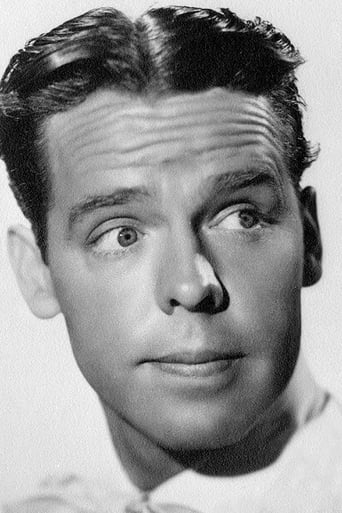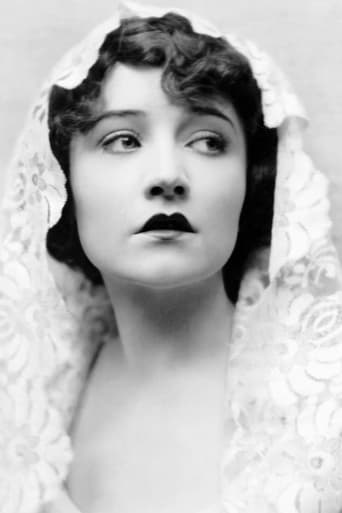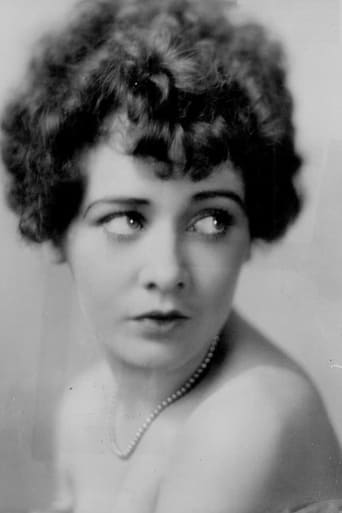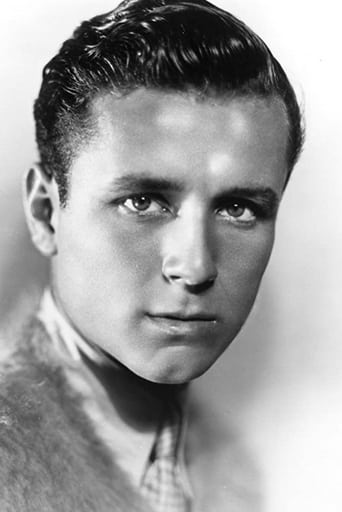Evengyny
Thanks for the memories!
Marketic
It's no definitive masterpiece but it's damn close.
Stevecorp
Don't listen to the negative reviews
Numerootno
A story that's too fascinating to pass by...
atlasmb
Released in 1929, On With the Show was filmed during the transitional period when silent films became talkies. Some films seemed little more than a collection of vaudeville acts strung together (a tradition that lasted, to some extent, even through the forties). Much of the acting is over the top and overly broad, because silent film stars were directed that way and vaudeville/stage performers have to play to the last seat in the theater. It is precisely the fact that OWTS captures that transitional period that makes it so interesting and so entertaining.The film is basically a presentation of a stage musical, similar to Showboat, with some backstage scenes involving characters in the stage show. In its attempt at authenticity, the camera often films too broadly, sometimes including the entire proscenium arch.The sets for the play with the film are beautiful, even when viewed in B&W. The play is a lavish production, sometimes reminiscent of a Busby Berkley production. The action includes a motorcycle, mounted horsemen and dogs running across the stage.In the dance numbers, we see plenty of minstrel-like troupers dancing in rows. The actual dances they perform are rather amateurish by today's standards. Only the black tap dancers display superior talents and demonstrate that tap dancing has not changed so much, fundamentally, over the years. It was already a mature art form.A few performances had little to do with the stage play, if anything. But that seems true to the times. Most notable is Ethel Waters. who performs two enjoyable numbers that highlight her vocal talents.Joe E. Brown is a lot of fun to watch. His comedic timing is precise in this film. He also performs a specialty dance that shows him to be a real athlete.Three actresses play significant parts in the story. It is interesting to note their backgrounds.Betty Compson plays Nita, the actress who portrays the Phantom Girl in the musical. Betty had a strong background in Vaudeville, where she started out as a teen violinist. She appeared in 9 films release in 1929.Sally O'Neill plays the part of Kitty, the coat check girl who saves the play by going on stage. Sally also had a solid vaudeville background and appeared in 8 films released in 1929.Louise Fazenda plays an actress whose sole contribution to the play is a wild, offstage laugh. Louise had a background in silent films, but made the transition to talkies. She appeared in 10 films released in 1929.I found much of the music enjoyable. Some had silly lyrics, which was common. Consider the lyrics "Drink your julep with your two lips"--fun to hear.In the end, OWTS is very dated and that is why it is such a hoot to watch. It captures many bits of the era's humor and preserves actual pieces of vaudeville.
kidboots
Sally O'Neil couldn't sing or dance but that didn't stop Warner's giving her a leading role in this Technicolored song and dance fest. It was the very first all talking, all singing, all dancing, all Technicolored movie produced at Warners, who had dazzled audiences with "The Jazz Singer" in 1927. All color movies were never going to work in those early sound days, apart from the fact that colours didn't photograph true (blues tended to turn green and people's faces photographed pink), Technicolor needed lighting ten times as bright as black and white photography, so the heat in the studio was always intense. "On With the Show" was going to be the first of many Warner's films filmed in colour but aside from the problems mentioned, by the end of 1930 musicals were on their way out so only a few films were made. Now only Technicolor fragments remain - the finale from "Gold Diggers of Broadway" and "Wild Rose" from "Sally" etc. For years "On With the Show" was famous for being the film that "42nd Street" (1933) took it's plot from but it is clear that the only thing they have in common is the "eager newcomer saves show" cliché. Still in May of 1929 audiences would have been dazzled not only by the singing and dancing but by the glorious colour as well. The plot revolves around the off stage dramas and the musical numbers of "The Phantom Sweetheart", a play beset by financial worries and stuck in a one horse town - tonight it is Broadway or bust!!!Kitty (Sally O'Neil) a ticket seller, believes she could be "Broadway Bound" if only she was given a chance to prove herself. Jimmy (William Bakewell) the Head Usher and her sweetheart agrees. Meanwhile the cast are more concerned about their unpaid wages than "putting on a show" - most vocal is Harold (Arthur Lake) the whiney voiced juvenile, whose offstage bickering with his partner Joe (Joe E. Brown) is a running gag throughout the movie.The musical show starts out with a rousing ensemble number "Welcome Home" -highlight is a group of spirited tap dancers. Next temperamental star Nita French (Betty Compson) "in the flesh, baby, in the flesh" sings "Let Me Have My Dreams" - it is sang constantly throughout the film. Ethel Waters is then announced by Sarah (Louise Fazenda is a standout with her wicked laugh) and Ethel's performance is timeless. She sings the magnificent "Am I Blue" and later on the wonderfully saucy "Birmingham Bertha" ("I'm a real Simple Simon, wouldn't you know - I gave him a diamond and all of my dough"!!!). The wonderful John W. Bubbles from Buck and Bubbles is the cheeky dancer. He originated the role of Sportin' Life in the 1935 production of "Porgy and Bess" and even gave tap lessons to Fred Astaire. But those two timeless classics are interspersed with some not-so-great ones - like "Lift Your Juleps to Your Two Lips", another hearty ensemble piece in which Harold as the "leading juvenile" doesn't sing or dance but stands around posturing while Joe E. Brown, who is not very funny in this film, does an eccentric dance. Jimmy suggest that maybe he can rob the box-office, that way the cast will get their wages - later on there is a real robbery and of course Jimmy is the chief suspect. The big production number is "In The Land of Let's Pretend" - it would have looked spectacular in Technicolor. It's an extremely "talkie" film and seems quite long. It is densely plotted and there are so many speeches in the last third of the film - everything has to be explained - obviously they didn't think the audience could figure it out for themselves.When the studios found out Betty Compson was an accomplished musician her career was given a new lease of life in these singy, dancey days. Arthur Lake had the most irritating voice in films - it's hard to believe that he lasted long enough to be given his dream role of "Dagwood" at the end of the thirties. The Fairbanks Twins also provide some humour as a pair of high stepping chorus girls.Highly Recommended for Ethel Waters.
Michael Morrison
When I saw "On With the Show" on Turner Classic Movies, I was very disappointed in the poor quality of the picture and the sound, but was very pleased by some clever dialog, although realizing some of it was not so clever, and I was absolutely in awe of the performance of Betty Compson.She was not only lovely just to look at, in her big scene near the end, she stole the show.She was more than charming -- she was adorable.Joe E. Brown's presence in a movie is usually enough to make me skip it but here he is toned down considerably, is not so silly, and he performs an eccentric dance with a surprising athleticism. I actually liked him in "On With the Show." Sally O'Neil was surprising. She sounded at first like some precocious child, with little-girlish voice, but when this caterpillar bursts out of her cocoon, she is a star.One other aspect of this film is almost unique for its time: The cast is integrated. Right there on stage are black dancers with white dancers, although to be accurate there is not interaction between white and black. Still, it was a start.Ethel Waters made what was apparently her film debut, and surely was an immediate hit since she was already a star in other media.A 21st century viewer of "On With the Show" must consider context, remember the times in which it was made, during the changeover from silents to talkies, to be able to appreciate it fully.There were lots of great individual talents involved, and a viewer should try to ignore the poor framing of the scenes and the poor quality of the sound, at least some of which might be because of the age or even generation of the print.But appreciate the historicity as well as the talent, and you will enjoy "On With the Show" as much as I did.
lugonian
ON WITH THE SHOW (Warner Brothers, 1929), directed by Alan Crosland, is the studio's contribution to MGM's box office hit, THE Broadway MELODY. Unlike other backstage musicals from that era, this one consists of no dress rehearsals nor pre-show preparations. It skips all that in favor of what's presented on opening night at the Wallace Theater somewhere in New Jersey. The opening title card sums it up best, "For weeks, 'The Phantom Sweetheart' troupe has staggered through the rough tank towns toward distant Broadway — It's pathway strewn with unpaid bills. Tonight would tell the tale, Broadway or Bust." And Broadway or Bust it is. In fact, an odd mixture of two stories for the price of one. The first being the behind the scenes plot development revolving around the theatrical troupe and staff. Instead of the usual unrelated musical numbers most commonly found in Hollywood back-stagers, the second story titled "The Phantom Sweetheart," is set to song and dance on a Southern plantation where a young man (Arthur Lake) falls in love with a veiled goddess (Betty Compson) prior to his wedding day. Not seen in its entirety, the stage production is interrupted with inter-cuts of the backstage story.In spite of Lake and Compson heading the cast, their scenes, along with others, are secondary. There are no characters who actually dominate the story from start to finish, but an assortment of those coming in and out whenever their scenes allow. The center of attention really belongs to the least likely pair of Jimmy (William Bakewell), the head usher, and his girlfriend, Kitty (Sally O'Neil), a coat room girl, whom Jimmy feels has the "stuff" to make it on Broadway After the rise of the curtain where the actors perform to a full house, situations occur, all involving money. Jerry (Sam Hardy), the producer, owes Sam Bloom (Purnell B. Pratt) unpaid bills and keeps him from taking back his scenery or taking what's owed him from the box office cash receipts; Willie Durant (Wheelar Oakman), the show's backer, refuses to guarantee capital income and later forces himself on Kitty; Harold Astor (Lake), the juvenile leading man in need of cash to give to his mother, constantly bickering about scene stealing with fellow comedian Joe Beaton (Joe E. Brown); and leading lady Nita French (Compson), refusing to continue her performance unless she receives the $400 due her. The very moment of her strike, the box office gets held up by a mysterious figure holding a gun. All this, and opening night, too, but the show must go on, Broadway or bust.With score composed by Harry Akst and Grant Clarke, the musical program is as follows: "Welcome Home" (sung by Henry Fink); "Let Me Have My Dreams" (sung by Betty Compson); "Am I Blue?" (sung by Ethel Waters); "Lift the Tulips in Your Two Lips" (sung by Fink and Josephine Houston, danced by the Four Covans); "Let Me Have My Dreams" (reprise by Compson); specialty dance solo number (Joe E. Brown); "In The Land of Let's Pretend" (sung by chorus); "Don't It Mean a Thing to You" (sung by Josephine Houston and Arthur Lake); "Let Me Have My Dreams" (sung by Sally O'Neil); "Birmingham Bertha" (sung by Ethel Waters); "Wedding Day" (sung by Fink, Lake and Houston); and Finale (entire cast).Other members of the cast consist of Louise Fazenda as Sarah Fogerty, an eccentric comedienne who supplies offstage laughter; Thomas Jefferson (not the third U.S.President) as "Dad", the stage doorman; Lee Moran and Harry Gribbon as stage hands, Pete and Ike, along with specialty acts by the Fairbanks Twins and an assortment of black entertainers highlighted by a Ethel Waters, in her movie debut, taking center stage with her fine rendition of the film's most notable song, "Am I Blue?" Her solo effort, along with "Birmingham Bertha" opposite Charlie Bubbles, both unrelated to the theatrical story, are highlights, along with a lively but unmemorable score to make up for its dull stretches at the midway point. The staging by Larry Ceballos is adequate, not spectacular, yet steps towards the right direction compared to 1929 stage musicals consisting of cart wheel dancing and acrobatics.Crosland, who made history directing THE JAZZ SINGER (1927), the "first talkie," improves with techniques revolving around camera movement with angles taken from different parts of the stage, above and beyond spiral staircases as chorus girls rush down to meet their curtain call, and silhouette image of musical conductor in orchestra pit waving his stick in front of the rising curtain or stage performance. What's lacking is further use of close-ups of principal players and dancers, something that would be common place in future musicals to come. It's also fun going back in time watching antiques like this and listening to catch phrases of the day of "Go sit on a tack," or corny dialog recited by Sam Hardy, "There are only a few of you sweet kids left," or "Go out and give them everything you got." For 1929, ON WITH THE SHOW made cinema history for being the first musical filmed entirely in color. Current prints that have circulated either in revival theaters of the 1970s and 80s, later on cable television (TNT in February 1991 as part of a tribute to Black History Month) and on Turner Classic Movies, are currently in black and white. To date, color prints are presumed lost. Fortunately the movie survives, considering how many early talkies have been lost due to neglect or decay.Its length of 103 minutes might be a bit long, but I cannot help but feel its initial theatrical showing was a bit longer considering a slight interruption of the underscoring after the opening cast credits. And now, on with the show. (***)




